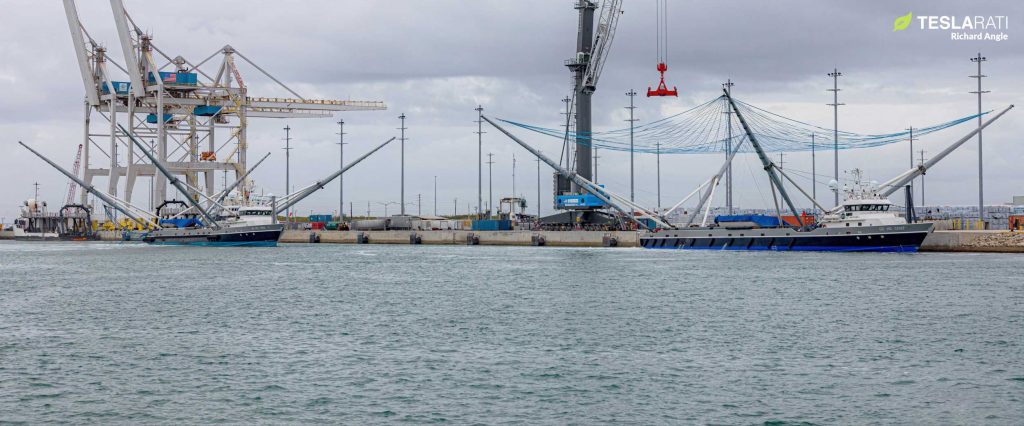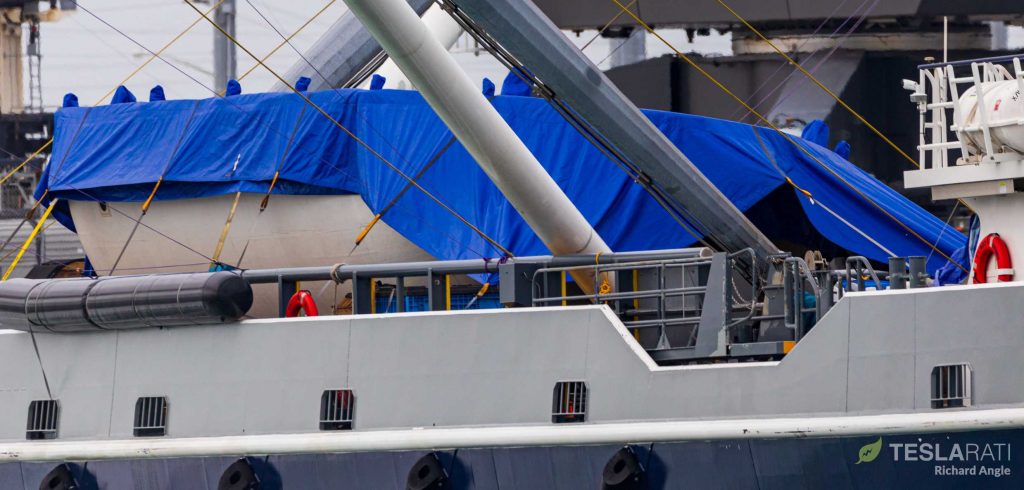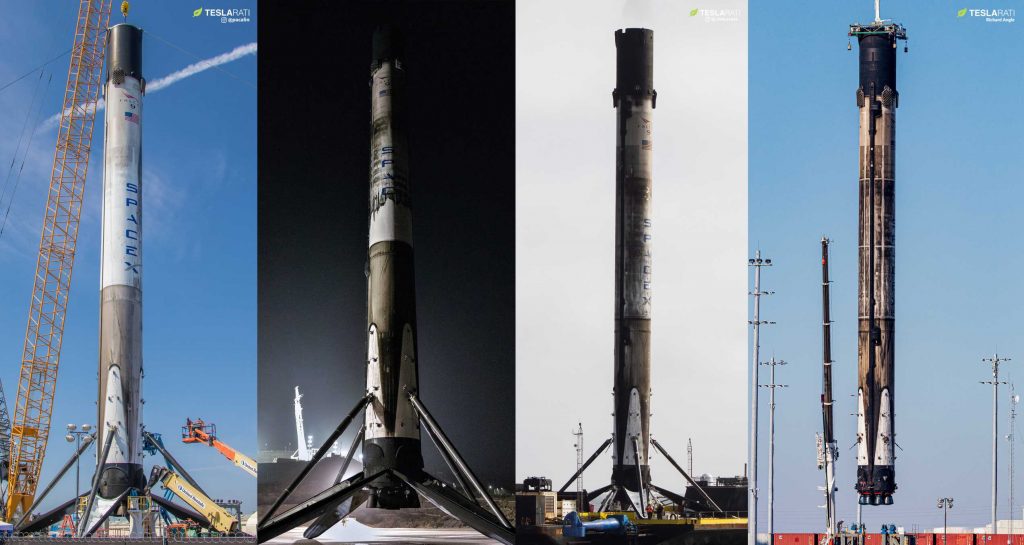

News
SpaceX's workhorse rocket is almost halfway to reaching ambitious reusability goals
Thanks to a recent cluster of major milestones, SpaceX’s family of Falcon 9 and Heavy rockets are rapidly nearing the halfway point along the path to several ambitious goals for booster and fairing reusability.
Back in the early 2010s, SpaceX’s CEO Elon Musk’s original dream was to make Falcon 9 and Falcon Heavy 100% reusable, meaning that the company would need to find ways to reliably recover boosters (first stages), payload fairings (or Dragon spacecraft), and the rocket’s upper (second) stages. The concept of Falcon 9 second stage reuse actually survived all the way into 2018 before Musk ultimately conceded defeat, accepting that Falcon 9 and Heavy simply didn’t offer the performance necessary to make full reusability a worthwhile investment. The concept, however, still lives on in SpaceX’s next-generation Starship launch vehicle.
This does mean Falcon rockets will never be fully reusable, but it’s still up to SpaceX to decide how far they’ll push the envelope with the rockets’ existing reusable hardware. At the moment, it appears that a vast majority of Falcon rockets will be able to be routinely recovered and reused, capitalizing on the fact that Falcon 9 and Falcon Heavy boosters already represent some 50-75% of the cost of building each two-stage rocket. While Falcon upper stages and Dragon trunks will never be reused, both booster and payload fairing reuse are rapidly approaching their own unique halfway points on the path to ambitious reusability targets.


Shortly after SpaceX’s January 29th Starlink V1 L3 launch, carrying the third batch of 60 upgraded v1.0 satellites to orbit, twin fairing recovery ships GO Ms. Tree (formerly Mr. Steven) and Ms. Chief teamed up for their second-ever simultaneous fairing catch attempt. Ms. Chief – only active since November 2019 – reportedly just barely missed her first successful catch, while Ms. Tree managed to snag one of the Falcon 9 fairing halves in her massive net – the ship’s third successful catch.
Worth an estimated $3M per half according to CEO Elon Musk, Falcon 9’s payload fairing represents approximately 10% of the rocket’s total manufacturing cost. Made out of a carbon fiber and aluminum honeycomb composite material, fairings also also takes a disproportionate amount of time and space to produce – primarily due to their large size (a school bus could comfortably fit inside a fairing) and the need for commensurately large curing ovens. That composite honeycomb structure also makes it relatively easy for Falcon payload fairings to suffer from corrosion when dunked in seawater, leading SpaceX to the seemingly bizarre solution of installing giant arms and nets on ships.


Catching fairings has proven to be incredibly unforgiving, however, and SpaceX has simultaneously worked to make its Falcon fairings much more waterproof (and thus resistant to corrosion) while keeping them as light as possible. In fact, SpaceX’s first fairing reuse occurred less than three months ago and used two halves that previously landed in the Atlantic Ocean, demonstrating that difficulties reliably catching fairings will not stand in the way of reuse.
Ms. Chief missed her January 29th catch attempt, she still managed to fish her fairing half out of the ocean, while Ms. Tree’s successfully-caught half means that SpaceX ultimately recovered the full Starlink V1 L3 fairing. With a little luck, that recovered fairing will launch again in the near future.
Five for 5
Simultaneously, SpaceX is making excellent progress along the path to airliner-like rocket reusability. In November 2019, on the same Starlink mission that debuted flight-proven fairings, Falcon 9 booster B1048 became the first SpaceX rocket to launch (and land) four times. Less than two months later, Falcon 9 B1049 doubled down on that reusability milestone, becoming the second booster to launch and land four times, followed by Falcon 9 B1046 just 12 days later. Falcon 9 B1046 was (intentionally) destroyed after its fourth launch, precluding a fourth landing attempt, but it emphasizes just how confident SpaceX is in Falcon 9’s Block 5 upgrade.

Designed to allow each Falcon 9 and Heavy booster to perform a minimum of 10 launches and landings, the Block 5 upgrade is potentially just a few weeks away from reaching the halfway point along the path to that ambitious reusability design goal. Speaking at the NASA Kennedy Space Center earlier this month, a SpaceX engineer recently revealed that a Falcon 9 booster would conduct its fifth launch in support of a Starlink mission (either Starlink V1 L4 or L5) scheduled no earlier than (NET) mid-to-late February.
Pictured above, Falcon 9 booster B1048 – the first to launch four times – is the likeliest candidate for the first fifth flight of a SpaceX rocket. If the booster’s reuse goes as planned, it’s safe to say that Falcon 9 B1049.4 will follow closely on the heels of its predecessor with its own fifth-flight milestone. All things considered, SpaceX’s workhorse rocket is rapidly approaching the zenith of its theoretically-achievable reusability.
Check out Teslarati’s Marketplace! We offer Tesla accessories, including for the Tesla Cybertruck and Tesla Model 3.
News
Tesla UK sales see 14% year-over-year rebound in June: SMMT data
The SMMT stated that Tesla sales grew 14% year-over-year to 7,719 units in June 2025.

Tesla’s sales in the United Kingdom rose in June, climbing 14% year-over-year to 7,719 units, as per data from the Society of Motor Manufacturers and Traders (SMMT). The spike in the company’s sales coincided with the first deliveries of the updated Model Y last month.
Model Y deliveries support Tesla’s UK recovery
Tesla’s June performance marked one of its strongest months in the UK so far this year, with new Model Y deliveries contributing significantly to the company’s momentum.
While the SMMT listed Tesla with 7,719 deliveries in June, independent data from New AutoMotive suggested that the electric vehicle maker registered 7,891 units during the month instead. However, year-to-date figures for Tesla remain 2% down compared to 2024, as per a report from Reuters.
While Tesla made a strong showing in June, rivals are also growing. Chinese automaker BYD saw UK sales rise nearly fourfold to 2,498 units, while Ford posted the highest EV growth among major automakers, with a more than fourfold increase in the first half of 2025.
Overall, the UK’s battery electric vehicle (BEV) demand surged 39% to to 47,354 units last month, helping push total new car sales in the UK to 191,316 units, up 6.7% from the same period in 2024.
EV adoption accelerates, but concerns linger
June marked the best month for UK car sales since 2019, though the SMMT cautioned that growth in the electric vehicle sector remains heavily dependent on discounting and support programs. Still, one in four new vehicle buyers in June chose a battery electric vehicle.
SMMT Chief Executive Mike Hawes noted that despite strong BEV demand, sales levels are still below regulatory targets. “Further growth in sales, and the sector will rely on increased and improved charging facilities to boost mainstream electric vehicle adoption,” Hawes stated.
Also taking effect this week was a new US-UK trade deal, which lowers tariffs on UK car exports to the United States from 27.5% to 10%. The agreement could benefit UK-based EV producers aiming to expand across the country.
News
Tesla Model 3 ranks as the safest new car in Europe for 2025, per Euro NCAP tests
Despite being on the market longer than many of its rivals, the Tesla Model 3 continues to set the bar for vehicle safety.

The Tesla Model 3 has been named the safest new car on sale in 2025, according to the latest results from the Euro NCAP. Among 20 newly tested vehicles, the Model 3 emerged at the top of the list, scoring an impressive 359 out of 400 possible points across all major safety categories.
Tesla Model 3’s safety systems
Despite being on the market longer than many of its rivals, the Tesla Model 3 continues to set the bar for vehicle safety. Under Euro NCAP’s stricter 2025 testing protocols, the electric sedan earned 90% for adult occupant protection, 93% for child occupant protection, 89% for pedestrian protection, and 87% for its Safety Assist systems.
The updated Model 3 received particular praise for its advanced driver assistance features, including Tesla’s autonomous emergency braking (AEB) system, which performed well across various test scenarios. Its Intelligent Speed Assistance and child presence detection system were cited as noteworthy features as well, as per a WhatCar report.
Other notable safety features include the Model 3’s pedestrian-friendly pop-up hood and robust crash protection for both front and side collisions. Euro NCAP also highlighted the Model 3’s ability to detect vulnerable road users during complex maneuvers, such as turning across oncoming traffic.
Euro NCAP’s Autopilot caution
While the Model 3’s safety scores were impressive across the board, Euro NCAP did raise concerns about driver expectations of Tesla’s Autopilot system. The organization warned that some owners may overestimate the system’s capabilities, potentially leading to misuse or inattention behind the wheel. Even so, the Model 3 remained the highest-scoring vehicle tested under Euro NCAP’s updated criteria this year.
The Euro NCAP’s concerns are also quite interesting because Tesla’s Full Self-Driving (FSD) Supervised, which is arguably the company’s most robust safety suite, is not allowed for public rollout in Europe yet. FSD Supervised would allow the Model 3 to navigate inner city streets with only minimal human supervision.
Other top scorers included the Volkswagen ID.7, Polestar 3, and Geely EX5, but none matched the Model 3’s total score or consistency across categories. A total of 14 out of 20 newly tested cars earned five stars, while several models, including the Kia EV3, MG ZS, and Renault 5, fell short of the top rating.
Elon Musk
Why Tesla’s Q3 could be one of its biggest quarters in history
Tesla could stand to benefit from the removal of the $7,500 EV tax credit at the end of Q3.

Tesla has gotten off to a slow start in 2025, as the first half of the year has not been one to remember from a delivery perspective.
However, Q3 could end up being one of the best the company has had in history, with the United States potentially being a major contributor to what might reverse a slow start to the year.
Earlier today, the United States’ House of Representatives officially passed President Trump’s “Big Beautiful Bill,” after it made its way through the Senate earlier this week. The bill will head to President Trump, as he looks to sign it before his July 4 deadline.
The Bill will effectively bring closure to the $7,500 EV tax credit, which will end on September 30, 2025. This means, over the next three months in the United States, those who are looking to buy an EV will have their last chance to take advantage of the credit. EVs will then be, for most people, $7,500 more expensive, in essence.
The tax credit is available to any single filer who makes under $150,000 per year, $225,000 a year to a head of household, and $300,000 to couples filing jointly.
Ending the tax credit was expected with the Trump administration, as his policies have leaned significantly toward reliance on fossil fuels, ending what he calls an “EV mandate.” He has used this phrase several times in disagreements with Tesla CEO Elon Musk.
Nevertheless, those who have been on the fence about buying a Tesla, or any EV, for that matter, will have some decisions to make in the next three months. While all companies will stand to benefit from this time crunch, Tesla could be the true winner because of its sheer volume.
If things are done correctly, meaning if Tesla can also offer incentives like 0% APR, special pricing on leasing or financing, or other advantages (like free Red, White, and Blue for a short period of time in celebration of Independence Day), it could see some real volume in sales this quarter.
You can now buy a Tesla in Red, White, and Blue for free until July 14 https://t.co/iAwhaRFOH0
— TESLARATI (@Teslarati) July 3, 2025
Tesla is just a shade under 721,000 deliveries for the year, so it’s on pace for roughly 1.4 million for 2025. This would be a decrease from the 1.8 million cars it delivered in each of the last two years. Traditionally, the second half of the year has produced Tesla’s strongest quarters. Its top three quarters in terms of deliveries are Q4 2024 with 495,570 vehicles, Q4 2023 with 484,507 vehicles, and Q3 2024 with 462,890 vehicles.
-

 Elon Musk4 days ago
Elon Musk4 days agoTesla investors will be shocked by Jim Cramer’s latest assessment
-

 News1 week ago
News1 week agoTesla Robotaxi’s biggest challenge seems to be this one thing
-

 Elon Musk2 weeks ago
Elon Musk2 weeks agoFirst Look at Tesla’s Robotaxi App: features, design, and more
-

 News2 weeks ago
News2 weeks agoSpaceX and Elon Musk share insights on Starship Ship 36’s RUD
-

 News2 weeks ago
News2 weeks agoWatch Tesla’s first driverless public Robotaxi rides in Texas
-

 News1 week ago
News1 week agoWatch the first true Tesla Robotaxi intervention by safety monitor
-

 News2 weeks ago
News2 weeks agoTesla has started rolling out initial round of Robotaxi invites
-

 Elon Musk2 weeks ago
Elon Musk2 weeks agoTesla to launch in India in July with vehicles already arriving: report


















